AI in Dentistry
October 11th, 2024
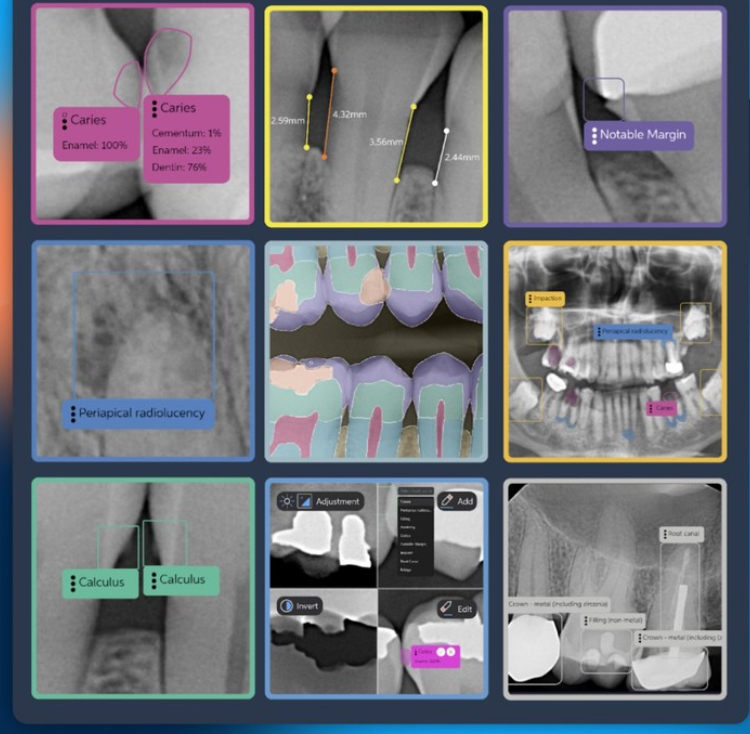
The Future is Here: AI-Powered Dentistry at Water Tower Dental Care
At Water Tower Dental Care, we're committed to providing our patients with the most advanced and comfortable dental experience possible. That's why we're excited to be at the forefront of a revolution in dentistry: artificial intelligence (AI).
You might be surprised to learn that AI is already playing a key role in your dental care. From the moment you step into our office, AI is working behind the scenes to enhance accuracy, efficiency, and your overall experience.
How We Use AI to Enhance Your Care:
Precision Diagnostics with PearlAI: Our cutting-edge radiography system utilizes PearlAI to analyze your X-rays with incredible accuracy. This helps us detect even the smallest signs of dental issues like cavities, gum disease, and infections, often before they become visible to the naked eye. Early detection means less invasive treatments and better long-term oral health.
Same-Day Restorations with Cerec: Say goodbye to messy impressions and multiple appointments! Our Cerec system uses AI-powered 3D imaging and milling to create beautiful, custom restorations like crowns, inlays, and onlays in a single visit. This means less time in the chair and faster results.
Benefits of AI-Powered Dentistry:
Increased Accuracy: AI algorithms can analyze dental images and data with greater precision than the human eye, leading to more accurate diagnoses and treatment plans.
Faster Treatment: AI-powered tools like Cerec streamline procedures, reducing the time you spend in the dental chair.
Early Detection: AI helps identify potential problems early on, allowing for less invasive and more effective treatment.
Personalized Care: AI can analyze your unique dental data to create customized treatment plans tailored to your specific needs.
Improved Comfort: By increasing efficiency and accuracy, AI contributes to a more comfortable and less stressful dental experience.
The Future of AI in Dentistry:
This is just the beginning! The future of AI in dentistry holds even more exciting possibilities, including:
Predictive Analytics: AI can analyze your dental history and identify potential future issues, allowing us to take proactive steps to prevent them.
Virtual Assistants: AI-powered chatbots can answer your questions, schedule appointments, and provide personalized dental advice.
Robotic Dentistry: While still in its early stages, AI-assisted robotic systems may one day perform complex procedures with even greater precision.
At Water Tower Dental Care, we're committed to staying at the forefront of these advancements to provide you with the best possible care. Experience the difference AI can make in your oral health – schedule your appointment today!






 Apple cider vinegar has long been touted as a natural health remedy. It can aid digestion, help control blood sugar levels, alleviate sunburns, make hair shinier, and maybe even play a role in weight loss!
Apple cider vinegar has long been touted as a natural health remedy. It can aid digestion, help control blood sugar levels, alleviate sunburns, make hair shinier, and maybe even play a role in weight loss! For the most gorgeous teeth in Chicago – or anywhere –
For the most gorgeous teeth in Chicago – or anywhere –  Keeping your mouth healthy and looking good isn’t limited to what’s inside of it. Though teeth and gums get the spotlight in most dentist offices, cold sores can be even more unsightly and irritating than any issue inside of your mouth. Thankfully, dentists have the technology to get rid of the viruses that cause cold sores on your lips and around your mouth in just minutes. This technology comes in the form of lasers.
Keeping your mouth healthy and looking good isn’t limited to what’s inside of it. Though teeth and gums get the spotlight in most dentist offices, cold sores can be even more unsightly and irritating than any issue inside of your mouth. Thankfully, dentists have the technology to get rid of the viruses that cause cold sores on your lips and around your mouth in just minutes. This technology comes in the form of lasers. For the young and old, teeth grinding is a serious concern. Thankfully there are methods to stopping teeth grinding before it gets too serious. For the young, however, this can be harder to do than for an adult. Children have less of a conscious attitude toward health than an adult, who understands the cause and effect of such bad habits. For children, it will take the help of their parent to stop teeth grinding before it becomes a serious health concern.
For the young and old, teeth grinding is a serious concern. Thankfully there are methods to stopping teeth grinding before it gets too serious. For the young, however, this can be harder to do than for an adult. Children have less of a conscious attitude toward health than an adult, who understands the cause and effect of such bad habits. For children, it will take the help of their parent to stop teeth grinding before it becomes a serious health concern. Many people have serious phobias of doctors and dentists. Often it comes from past experiences that might not have gone over so well. Other times the fear lacks reason. Either way, there are ways to overcome the fear of the dentist so you can commit yourself to appointments and make sure your teeth are in great health.
Many people have serious phobias of doctors and dentists. Often it comes from past experiences that might not have gone over so well. Other times the fear lacks reason. Either way, there are ways to overcome the fear of the dentist so you can commit yourself to appointments and make sure your teeth are in great health. Losing a tooth either by accident or through declining oral health can be a tough experience. It can affect your confidence and well-being along with your oral health. Dental implants are a great way to keep your smile looking great and prevent further damage to your mouth. Of course, dental implants aren’t as simple as one would hope and there are several aspects to receiving an implant. However, if you practice good oral hygiene and are in the hands of an experienced dentist, you should have no problem rebuilding an excellent smile.
Losing a tooth either by accident or through declining oral health can be a tough experience. It can affect your confidence and well-being along with your oral health. Dental implants are a great way to keep your smile looking great and prevent further damage to your mouth. Of course, dental implants aren’t as simple as one would hope and there are several aspects to receiving an implant. However, if you practice good oral hygiene and are in the hands of an experienced dentist, you should have no problem rebuilding an excellent smile. It can take two weeks to a month for your jawbone to osseointegrate properly with the anchor. During that time, most patients are given a denture or temporary bridge to replace the missing tooth. Once the anchor is ready, the dentist will add a small connector to the anchor known as an abutment. The abutment connects the anchor to the replacement tooth
It can take two weeks to a month for your jawbone to osseointegrate properly with the anchor. During that time, most patients are given a denture or temporary bridge to replace the missing tooth. Once the anchor is ready, the dentist will add a small connector to the anchor known as an abutment. The abutment connects the anchor to the replacement tooth Digital Radiography is the process of taking x-rays using digital components rather than film. There are many benefits to digital x-rays compared to the old, film versions of x-rays. Not only is it safer, it’s quicker, more efficient, and can help save your teeth from unseeable damage.
Digital Radiography is the process of taking x-rays using digital components rather than film. There are many benefits to digital x-rays compared to the old, film versions of x-rays. Not only is it safer, it’s quicker, more efficient, and can help save your teeth from unseeable damage. If the thought alone of harmful bacteria colonizing inside your mouth and creating pockets in your gums that can lead to tooth decay, loose teeth, swelling, and bleeding doesn’t make you want to brush your teeth right away, this might. Research is showing periodontal disease, or gum disease, has a systemic link to several other diseases. Both the bacteria and the inflammation that is associated with periodontal disease are responsible for the links. So if bleeding gums doesn’t motivate you to practice proper oral care, helping managing a list of other disease might. Here are a few of those diseases:
If the thought alone of harmful bacteria colonizing inside your mouth and creating pockets in your gums that can lead to tooth decay, loose teeth, swelling, and bleeding doesn’t make you want to brush your teeth right away, this might. Research is showing periodontal disease, or gum disease, has a systemic link to several other diseases. Both the bacteria and the inflammation that is associated with periodontal disease are responsible for the links. So if bleeding gums doesn’t motivate you to practice proper oral care, helping managing a list of other disease might. Here are a few of those diseases: Probiotics have grown in popularity over the last few years. First, as a helpful ingredient for digestive health, now they are showing promising attributes to your oral health. From new mouthwashes and gums, probiotics are being focused and improved to help prevent cavities and bad breath, along with keeping gingivitis at bay.
Probiotics have grown in popularity over the last few years. First, as a helpful ingredient for digestive health, now they are showing promising attributes to your oral health. From new mouthwashes and gums, probiotics are being focused and improved to help prevent cavities and bad breath, along with keeping gingivitis at bay. Did you know that when you smile while talking on the phone, the person on the other end can tell and will respond positively? It’s true. It seems wild that someone might be able to tell if you’re smiling over the phone, but is it really that far-fetched? Think of how many times you’ve answered the phone in a bad or angry mood. The other person on the other end will almost immediately ask you what’s wrong. So why wouldn’t they be able to tell when you’re in a good mood?
Did you know that when you smile while talking on the phone, the person on the other end can tell and will respond positively? It’s true. It seems wild that someone might be able to tell if you’re smiling over the phone, but is it really that far-fetched? Think of how many times you’ve answered the phone in a bad or angry mood. The other person on the other end will almost immediately ask you what’s wrong. So why wouldn’t they be able to tell when you’re in a good mood? There is a lot to say about a smile that communicates your emotions precisely. It doesn’t always mean happy, either. A smile can communicate mischief, fear, doubt, surprise, and many other emotions. So how do you know if your smile is delivering the right message? First, you must find your perfect smile: the natural way you smile that makes you feel confident you’re communicating the right message. Here are our tips to getting that perfect smile.
There is a lot to say about a smile that communicates your emotions precisely. It doesn’t always mean happy, either. A smile can communicate mischief, fear, doubt, surprise, and many other emotions. So how do you know if your smile is delivering the right message? First, you must find your perfect smile: the natural way you smile that makes you feel confident you’re communicating the right message. Here are our tips to getting that perfect smile. Painful and intrusive, the canker sore is a annoyance that no person ever wants. Between the ages of 10 and 20, you have a high probability you’ll get a few canker sores a year that will last up to a week at a time. For adults, complex canker sores are always a possibility, though more rare. So what are canker sores, why do we get them, how do we find ourselves some relief?
Painful and intrusive, the canker sore is a annoyance that no person ever wants. Between the ages of 10 and 20, you have a high probability you’ll get a few canker sores a year that will last up to a week at a time. For adults, complex canker sores are always a possibility, though more rare. So what are canker sores, why do we get them, how do we find ourselves some relief?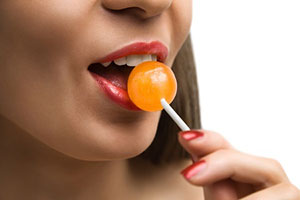 We’ve all been taught since a very young age that candy is the ultimate destroyer against teeth. However, new candies developed by scientists are turning that old story around. Now, there are several new candies (along with some older) that have beneficial attributes.
We’ve all been taught since a very young age that candy is the ultimate destroyer against teeth. However, new candies developed by scientists are turning that old story around. Now, there are several new candies (along with some older) that have beneficial attributes.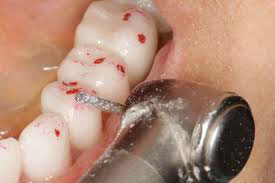 If you are experiencing, headaches, ear problems, clicking or grating jaw, mouth discomfort, and looseness of teeth, or any combination of these symptoms, you may be having an issue with your TMJ. If that’s the case, your dentist might recommend occlusal adjustments. What are occlusal adjustments? It is a method to reshape the surface of your teeth to create an even and harmonious relationship between the top and bottom teeth. To understand why this needs to happen though, we must dig a little deeper.
If you are experiencing, headaches, ear problems, clicking or grating jaw, mouth discomfort, and looseness of teeth, or any combination of these symptoms, you may be having an issue with your TMJ. If that’s the case, your dentist might recommend occlusal adjustments. What are occlusal adjustments? It is a method to reshape the surface of your teeth to create an even and harmonious relationship between the top and bottom teeth. To understand why this needs to happen though, we must dig a little deeper.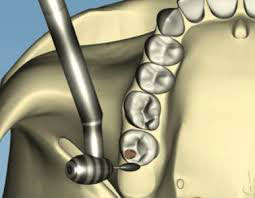 While shaving down teeth can seem like an easy option, it’s an irreversible procedure, and if the adjustments aren’t made properly, you could find yourself in a troubling situation. At Water Tower Dental, we offer non-damaging therapy options that can help fix the TMD condition. Using a Transcutaneous Electrical Neural Stimulation, or TENS, unit, we are able to asses any neuromuscular problems. While many doctors focus on the misplacement of the jaw, scientific developments have revealed that some problems associated with teeth, mouth, and jaws are actually caused by improper functions of the muscles and nerves. Using the TENS unit, we are able to find ideal positioning of the jaw.
While shaving down teeth can seem like an easy option, it’s an irreversible procedure, and if the adjustments aren’t made properly, you could find yourself in a troubling situation. At Water Tower Dental, we offer non-damaging therapy options that can help fix the TMD condition. Using a Transcutaneous Electrical Neural Stimulation, or TENS, unit, we are able to asses any neuromuscular problems. While many doctors focus on the misplacement of the jaw, scientific developments have revealed that some problems associated with teeth, mouth, and jaws are actually caused by improper functions of the muscles and nerves. Using the TENS unit, we are able to find ideal positioning of the jaw. Toothpicks have been one of the most widely used tools for hygiene in the world. These simple pieces of carved wood help us free those annoying food particles stuck between our teeth after a rousing meal. But are toothpicks good for your teeth? Doesn’t the act of poking and prodding at your teeth and gums seem slightly wrong? If you have that inclination, it’s because you’re right. While toothpicks can be a helpful tool, overuse can be harmful and should call alarm to a bigger concern.
Toothpicks have been one of the most widely used tools for hygiene in the world. These simple pieces of carved wood help us free those annoying food particles stuck between our teeth after a rousing meal. But are toothpicks good for your teeth? Doesn’t the act of poking and prodding at your teeth and gums seem slightly wrong? If you have that inclination, it’s because you’re right. While toothpicks can be a helpful tool, overuse can be harmful and should call alarm to a bigger concern.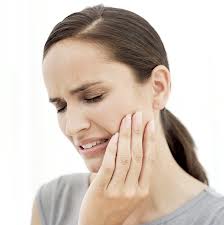 Clenching and grinding your teeth is a harmful and unhealthy habit to form. Unfortunately most people don’t even know they do it. Most teeth grinders do so in their sleep so they have no idea it’s happening. The result of clenching and grinding can cause serious damage to your teeth along with other symptoms. We’d like to show you how to stop grinding your teeth.
Clenching and grinding your teeth is a harmful and unhealthy habit to form. Unfortunately most people don’t even know they do it. Most teeth grinders do so in their sleep so they have no idea it’s happening. The result of clenching and grinding can cause serious damage to your teeth along with other symptoms. We’d like to show you how to stop grinding your teeth.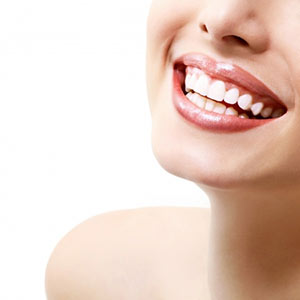 While listing out your New Years resolutions this time around, consider adding a few resolutions for your health, and specifically, your mouth. Keeping your teeth, gums, and tongue in good shape can help you in the years to come. Practicing good oral hygiene will help you look and feel good, along with allow you to avoid major dental surgeries and complications in the future. Here are 5 tips you can easily make into New Years resolutions for a better, healthier smile.
While listing out your New Years resolutions this time around, consider adding a few resolutions for your health, and specifically, your mouth. Keeping your teeth, gums, and tongue in good shape can help you in the years to come. Practicing good oral hygiene will help you look and feel good, along with allow you to avoid major dental surgeries and complications in the future. Here are 5 tips you can easily make into New Years resolutions for a better, healthier smile.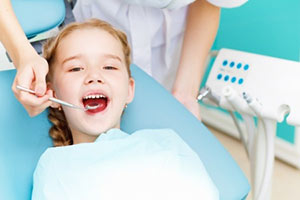 When it comes to your child, there are many firsts that must be determined. A very important first for a child is the first time they visit the dentist. At Water Tower Dental, we make sure that this fist visit is a great experience that helps a child learn to love cleaning their teeth and visiting the dentist for years to come. But when exactly should your child start to visit the dentist?
When it comes to your child, there are many firsts that must be determined. A very important first for a child is the first time they visit the dentist. At Water Tower Dental, we make sure that this fist visit is a great experience that helps a child learn to love cleaning their teeth and visiting the dentist for years to come. But when exactly should your child start to visit the dentist?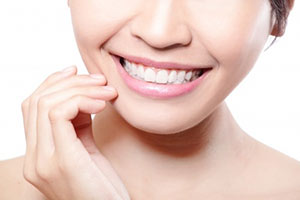 Of course it’s no question that the smartest practices for healthy teeth are brushing and flossing everyday. However, there are several more tips that can help you keep your teeth and gums healthy, and breath fresh. Today we’d like to discuss a few more smart practices for healthier teeth.
Of course it’s no question that the smartest practices for healthy teeth are brushing and flossing everyday. However, there are several more tips that can help you keep your teeth and gums healthy, and breath fresh. Today we’d like to discuss a few more smart practices for healthier teeth.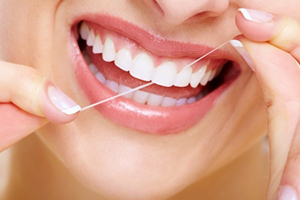 An interesting question that arises in our office from time to time from concerned patients is if they can potentially floss too much and cause damage to their teeth. Flossing is one of the most important oral hygiene practices a person should perform. It helps clear out plaque and bacteria build up between the teeth and gums that a normal toothbrush cannot reach. It may be surprising to read that you can, in fact, floss too much. However, we encourage you to read further to understand exactly what that means.
An interesting question that arises in our office from time to time from concerned patients is if they can potentially floss too much and cause damage to their teeth. Flossing is one of the most important oral hygiene practices a person should perform. It helps clear out plaque and bacteria build up between the teeth and gums that a normal toothbrush cannot reach. It may be surprising to read that you can, in fact, floss too much. However, we encourage you to read further to understand exactly what that means.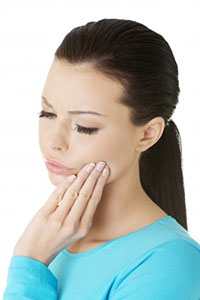 When it comes to any kind of oral discomfort, there are always many potential reasons for the pain. However, almost always, the pain can be determined as an issue with the teeth, gums, or tongue. When specified to those three, you can narrow down the possible causes of the pain.
When it comes to any kind of oral discomfort, there are always many potential reasons for the pain. However, almost always, the pain can be determined as an issue with the teeth, gums, or tongue. When specified to those three, you can narrow down the possible causes of the pain.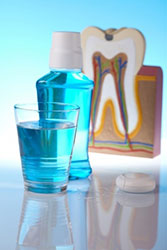 If you're looking for that extra step in oral hygiene to help kill bacteria and freshen breath, look no further than mouthwash. There are three leading types of mouthwash that all serve different purposes depending on your needs. Here's a helpful guide to educate you on what you should look for in a mouthwash and why.
If you're looking for that extra step in oral hygiene to help kill bacteria and freshen breath, look no further than mouthwash. There are three leading types of mouthwash that all serve different purposes depending on your needs. Here's a helpful guide to educate you on what you should look for in a mouthwash and why.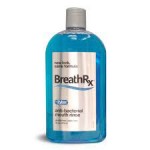
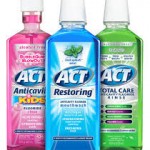
 What Is Sedation Dentistry?
What Is Sedation Dentistry? A large percentage of Americans suffer from bad breath. While good oral hygiene can help keep bad breath at bay, sometimes a mouth needs to take further measures to help keep it from smelling too bad. Today we'd like to discuss a few natural ways to help reduce bad smelling breath.
A large percentage of Americans suffer from bad breath. While good oral hygiene can help keep bad breath at bay, sometimes a mouth needs to take further measures to help keep it from smelling too bad. Today we'd like to discuss a few natural ways to help reduce bad smelling breath.




 Website Powered by Sesame 24-7™
Website Powered by Sesame 24-7™